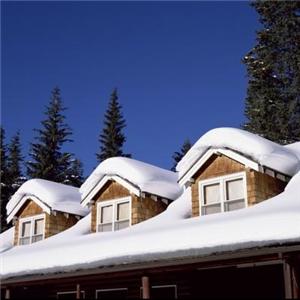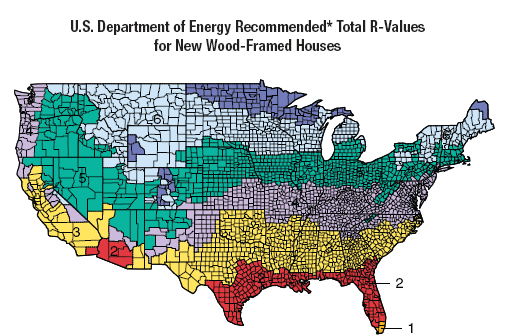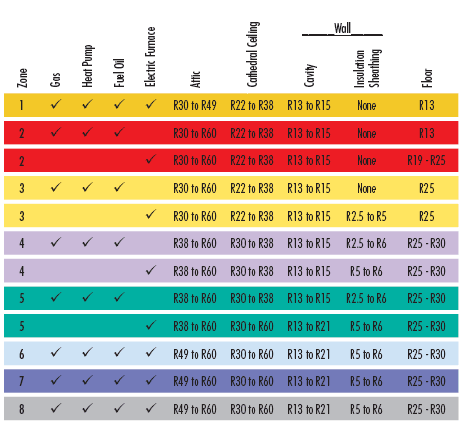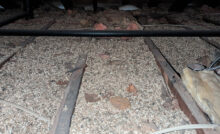Recommended Insulation Levels




We’ve been having another record winter here in New Hampshire and quite a few people are asking me if they have enough insulation in their homes. The expensive cost of fuel and rough economy has forced folks to re-evaluate their current insulation levels. By making sure you have the proper levels of insulation you may be able to save money on your heating and cooling bills.
In addition to saving money on heating bills, having the proper insulation levels can help protect your home from damaging ice dam problems. Preventing ice dams is sure to save you money as well by preventing water damage to the inside of your home.
USDOE Recommended R Values
The US Department of Energy publishes Recommended Total R Values for new wood framed houses. You can use the map below to find your zone and then use the chart below that to figure out the recommended R values for your home (R values indicate the thickness of insulation you need).


In addition to the map and chart the USDOE also provides an insulation calculator that can assist you with determining the recommended insulation levels in your home based on your zip code, type of heating and cooling and the type of construction you have.
Our Homes Insulation Levels
Our home was built 3 years ago and I thought it would be interesting to compare the recommended levels that are published today for new construction compared to our home. We live in Zone 6 and therefore require:
Walls = R13 to R21
Attic = R49 to R60
Floor = R25 to R30
Well our home was built just before some of these requirements changed so we’re close but not completely complying with these new requirements. Our house has R19 in the wall so that meets the current requirement and we have R30 in the floor so that’s good as well. Where we’re lacking a bit is in the attic. Our attic has between 12 inches and 16 inches of cellulose insulation. Cellulose insulation has an R value of approximately 3 to 3.5 per inch. So we have between R36 and R56 in the attic. The depth varies quite a bit because we have attic trusses and a floor in the attic. The floor limits the cellulose to a depth of 12 inches in some places.
If I were to build another home I’d invest in even better insulation. I’d be sure to have a full 18″ of cellulose in the attic and I’d opt for spray-in-place cellulose in the walls. Having said that our home is very comfortable and certainly not very expensive to heat and cool.
Recent Posts
Framing Stick Nailer vs Coil Nailer
Which is Better a Stick Nailer or Coil Nailer? Framers have many choices in nailers…
How Many Roofing Nails Per Square of Shingles
Estimating How Many Nails for a New Roof When it comes to estimating materials for…
Composite / PVC Decking – Layout Tips & Advice
Composite / PVC Decking Layout Tips and Advice Composite and PVC decking have really changed…
Benefits of an ERV System (Energy Recovery Ventilator)
Benefits of ERV Systems (Energy Recovery Ventilator) If you're building a new home or doing…
Vermiculite Attic Insulation Abatement
Vermiculite Attic Insulation If your home was built before 1990 there is a chance it…
Nuisance Tripping of AFCI (Arc Fault) Circuit Breakers
Arc Fault (AFCI) Circuit Breakers Tripping Often An arc-fault circuit interrupter (AFCI) or arc-fault detection…

View Comments
Hi Todd - you asked about linking to/using our photo of ice dam vs. no ice dam - feel free to do so. Thanks!
Todd,
Great post. As the recommended insulation values have changed over the years, most houses do not have enough insulation by current standards. We added insulation to our attic two years ago and the cost paid for itself in one year's savings on heating oil (we cut our oil use in half).
The one place my house is lacking is the walls... we have 2x4 construction, so the cavity space is limited. I am planing on re-siding the house in the next year, at which point we may add R4 to the sheathing. In any case, good information as always.